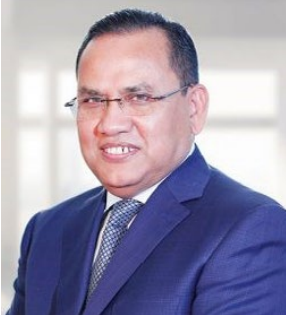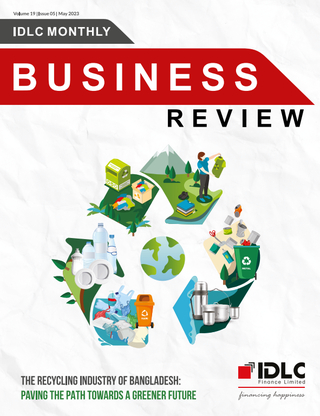
Expert Opinion on Exclusive Feature
Interviewed by Syed Md. Rakeen, Team MBR
M. A. Jabbar, a CSE graduate from the University of Texas, Dallas, USA, is highly aware of and compliant with the changing flows in global markets and is passionate about CSR and sustainability. He has been instrumental in developing a good reputation and ensuring continued success for DBL. His dynamic leadership brought growth opportunities for the company, resulting in the evolution of more diversified industries for DBL Group. In a span of three decades, DBL has grown and diversified from apparel and textiles to ceramic tiles, pharmaceuticals, dredging, telecom, VLSI, and the ICT industry. M. A. Jabbar is a member of multiple renowned national and international bodies and the president of the proposed Bangladesh Semiconductor Industry Association (BSIA). Team MBR was in conversation with Mr. M. A. Jabbar and was fortunate enough to receive his take on the semiconductor industry.
Syed Md. Rakeen: According to the Semiconductor Industry Association, the size of the global semiconductor industry was USD 574.1 billion in 2022. Do you think that Bangladesh has the potential to nail down a competitive position and capture at least a small portion of the highly competitive global market?
M. A. Jabbar: The global semiconductor industry was worth USD 574.1 billion in 2022, and the prediction says that it is going to be a market worth above USD 1,300 billion by 2030. Bangladesh has an advantage because the majority of its population is young. Almost 45% of the population is under the age of 25, and 70% is under the age of 40. The number of yearly ICT graduates is above 25,000. About 800 professional engineers are working with global companies in Dhaka, competing with engineers from other countries. So, it is possible to contribute to the global market with the right strategic plan, and this is the right time. However, we are already late.
Syed Md. Rakeen: Multiple hi-tech parks have been established recently, with access to high-speed internet, uninterrupted power supplies, and advanced telecommunications systems. How can Bangladesh reap the benefits of its hi-tech parks to make the semiconductor industry flourish?
M. A. Jabbar: While working with global clients, it is imperative to have high-speed internet, uninterrupted power supplies, and lower-cost spaces to minimise the overhead cost. Hi-tech parks have those facilities along with other strategic benefits as well. To make the semiconductor industry flourish, Bangladesh can invite global companies to set up their local offices in hi-tech parks. Besides global companies, local companies should be inspired to develop their own intellectual properties and products by providing additional benefits or incentives.
Syed Md. Rakeen: Building semiconductors requires a high level of expertise, while Very Large Scale Integration (VLSI) experts are very few in Bangladesh. How can academia and industries collaborate to produce more skilled individuals for the semiconductor industry?
M. A. Jabbar: To establish an industry, it is crucial to keep the resource pipeline ready. If any global company wants to come to Bangladesh but does not see any strategic plan or process for preparing trained engineers, they will not feel interested as there is no growth opportunity there. In the semiconductor design industry, we need to train fresh graduates for 4-6 months to make them ready for any project. This is a long process that is also costly for small companies. From the very beginning, Neural Semiconductor believes that an efficient industry-academia collaboration should be there to establish this industry. We are working closely with a few universities to develop industry-grade resources for the VLSI segment. We have an official MoU with top engineering universities, and we maintain regular activities with them, such as arranging seminars, workshops, technical discussions, VLSI syllabus upgrades, thesis/project collaboration, etc.
Syed Md. Rakeen: According to industry insiders, Bangladesh is raking in about USD 5 million annually from designing semiconductor chips; however, its neighbour, India, is earning USD 60 billion a year from this sector. Would you kindly shed some light on the areas where Bangladesh lags behind its peers?
M. A. Jabbar: Bangladesh is in a very early stage of contributing on a large scale to the semiconductor design industry. We have to plan from scratch, including policy development, intensive training and development programmes, university alignment, focused committees or associations, a strategic plan, and a budget for at least ten years. We need a long-term strategy rather than short-term actions. Even if 5,000 engineers are trained, developed, and placed into projects, it could generate revenue of USD 150 million to USD 200 million per year.
Syed Md. Rakeen: As reported in The Daily Star, Bangladesh has the potential to export semiconductors worth USD 3 billion in the next five years. In your opinion, which initiatives can help unlock the massive potential of the semiconductor industry?
M. A. Jabbar: We need to prepare a long-term roadmap, at least for ten years. We have to prepare the ecosystem first through requirement analysis and policy development and then through trained resources. After that, we have to inspire both global and local companies to invest in this industry by offering incentives or benefits. The goal should be to develop the design market, followed by the testing and packaging markets.
Syed Md. Rakeen: Ulkasemi, Neural Semiconductor, and PrimeSilicon are some of the few companies that are making strides in this nascent industry. How can Bangladesh leverage its existing semiconductor industry players to expand its presence in the semiconductor market?
M.A. Jabbar: Bangladesh needs to develop inter-government understandings as much as possible. This will minimise business obstacles and open the doors to new opportunities. Local companies have the potential and experience, but they need ecosystem support, initial financial support, and proper incentives to mitigate the risks. Also, the EDA tools (Cadence/ Synopsys /Mentor Graphics) are very expensive. So, the government should give central tool support to engineering universities so that small startups in VLSI can survive and grow. The good news is that the ICT division understood the need for this and has already initiated a project named ‘Hire & Train’ to develop VLSI-skilled resources.
Syed Md. Rakeen: Protection of intellectual property rights and collaboration with global players are two major concerns that need to be addressed. What are your suggestions for addressing intellectual property issues in the semiconductor industry to protect innovations and facilitate collaboration with global players?
M. A. Jabbar: In technology companies, IP protection is vital, and to support them, Bangladeshi companies need to maintain it strictly. We should follow global standards, prepare ourselves as required, and practise them carefully. Proper documentation and IP protection allow global clients to trust each other to share knowledge and access advanced technology.
Syed Md. Rakeen: According to a report by J.P. Morgan, chip shortages could very well last through 2023 and into 2024. What is your long-term perception of Bangladesh’s semiconductor industry, considering the global market dynamics and potential entry strategies?
M. A. Jabbar: We saw an investment of about USD 1.2 trillion globally due to the supply chain complexities. Giant companies are planning to be self-sufficient by diversifying their business positions. So, the chip shortage issue will be sorted out very soon. In addition, global dynamics say the potential of Bangladesh is better than before as a large amount of investment came to Asian countries like Malaysia, Vietnam, India, etc. These countries will need the support of Bangladesh, as there will be a shortage of skilled engineers in the near future.

The Recycling Industry of Bangladesh: Paving the Path towards a Greener Future
Waste generation has risen to alarming levels in recent years, with the World Bank reporting that the figure is expected to reach almost 3.88 billion metric tonnes by 2050. Population growth, the rapid urbanisation rate, economic expansion, and consumers’ indiscriminate consumption patterns are deemed to be the key reasons behind this ever-increasing waste generation. The state of our environment is a dire concern owing to the existing linear economic system (take-make-waste), and one of the most effective ways to combat this crisis is by championing the cause of recycling.
The rise in purchasing power of people in Bangladesh has led to increased consumption, eventually resulting in large-scale waste generation. Moreover, the informal recycling process is hindering the country’s efficient waste management, preventing Bangladesh from recognising its true potential in the recycling industry. However, adopting a circular economy, the alternative to the linear economic system, through waste elimination and replenishment of natural resources can not only unlock avenues for revenue streams but also pave the way for a greener future.
In a world of limited resources, recycling offers a beacon of hope and a tangible solution to mitigate the damage we have inflicted on our environment. By implementing a proper recycling process, Bangladesh can bolster its economic and environmental landscape by generating employment opportunities, promoting economic growth, and preserving natural resources.
Md. Shah Jalal
Editor
IDLC Monthly Business Review
Download View